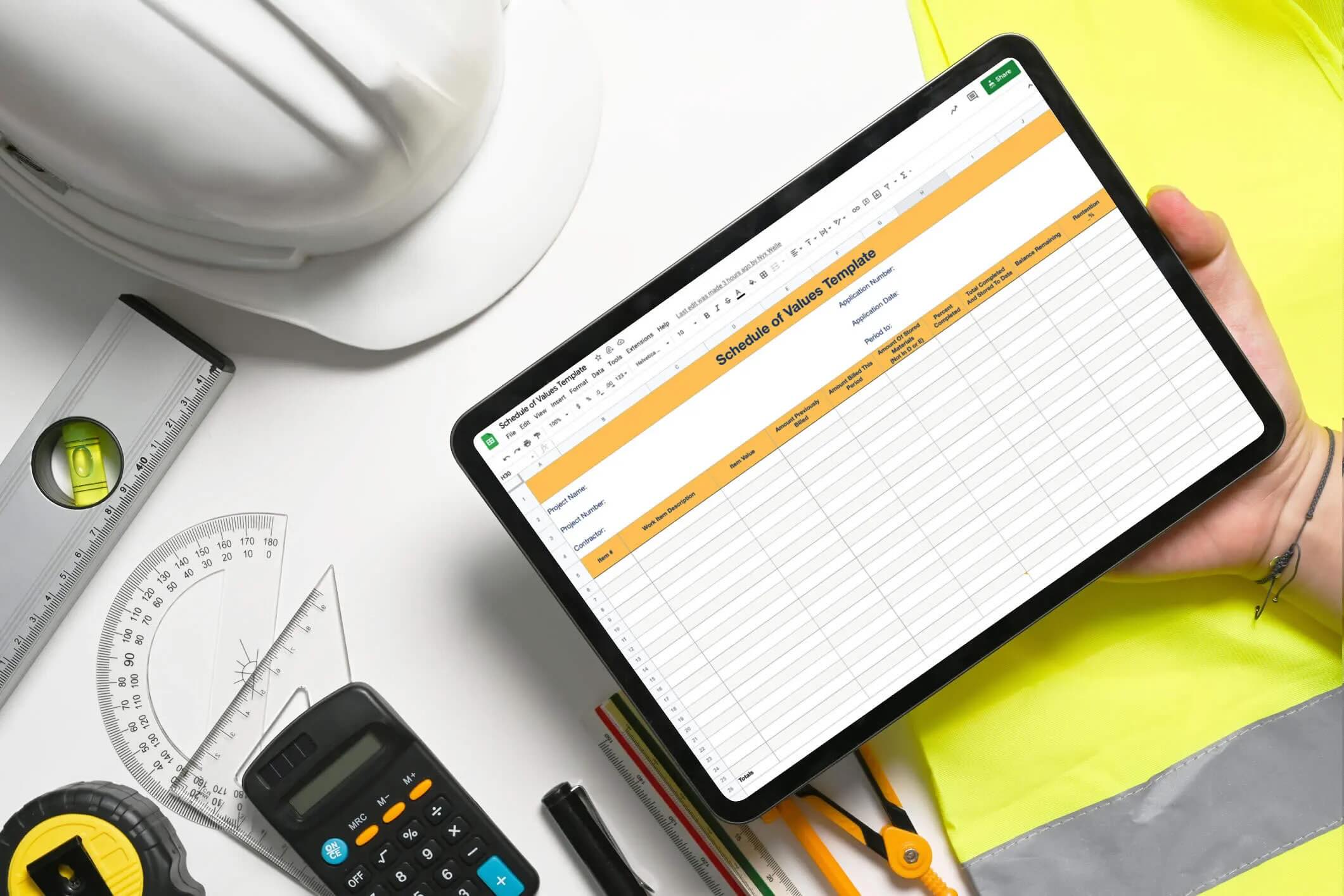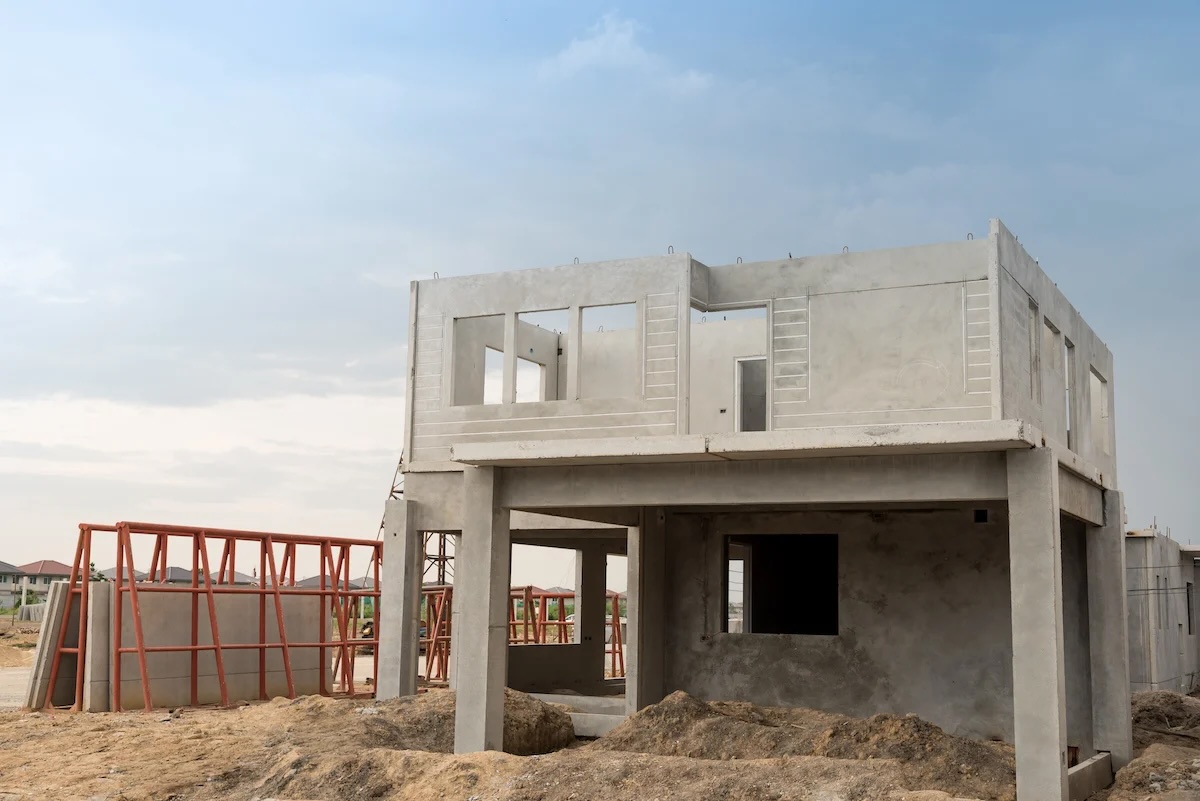Home>diy>Building & Construction>What Are The Main Types Of Construction Contracts


Building & Construction
What Are The Main Types Of Construction Contracts
Modified: January 4, 2024
Learn about the main types of construction contracts for building construction projects. Understand the benefits and considerations of each contract type.
(Many of the links in this article redirect to a specific reviewed product. Your purchase of these products through affiliate links helps to generate commission for Storables.com, at no extra cost. Learn more)
Introduction
Construction projects are complex endeavors that involve multiple parties, extensive planning, and careful execution. These projects require various agreements and contracts to ensure that all parties involved are on the same page regarding the scope of work and the financial arrangements. The type of contract used can have a significant impact on the project’s success, cost control, and risk allocation.
In this article, we will explore the main types of construction contracts used in the industry. Each contract type has its unique features, benefits, and potential drawbacks. By understanding these different contract types, you can make informed decisions when entering into agreements for your construction projects.
Key Takeaways:
- Choose the right construction contract type based on project requirements, budget constraints, and level of uncertainty to ensure cost control and successful project outcomes.
- Open communication, clear documentation, and proactive project monitoring are crucial for effective risk mitigation and smooth construction processes under any contract type.
Read more: What Is A Construction Contract
Lump-Sum Contracts
A lump-sum contract, also known as a fixed-price contract, is one of the most common types of construction contracts. In this agreement, the contractor agrees to complete the project for a predetermined fixed price. The scope of work, specifications, and timeline are clearly defined in the contract. This type of contract is often used for projects where the scope and specifications are well-defined, and the client wants a firm price.
One of the key advantages of a lump-sum contract is that it provides cost certainty for the client. They know the exact price they will be paying for the project, which can help with budgeting and financial planning. Additionally, the contractor assumes the risk of cost overruns and unexpected delays, providing peace of mind to the client.
However, lump-sum contracts may not be suitable for all projects. If the scope of work is not well-defined or if there are design uncertainties, it can be challenging to accurately estimate the cost upfront. Contractors may include contingency amounts in the contract price to account for potential unknowns, resulting in a higher overall cost for the client.
It is important for both parties to carefully review and negotiate the terms of a lump-sum contract to ensure that all aspects of the project are adequately covered. This includes clear specifications, a detailed scope of work, and a realistic timeline. If any changes or modifications are required during the project, they should be addressed through a formal change order process, which may result in additional costs.
Overall, lump-sum contracts offer several benefits, including cost certainty, clearly defined scope, and greater risk transfer. However, it is essential to consider the specific project requirements and potential risks before entering into this type of contract. Open communication, proper documentation, and regular project monitoring are key to ensuring a successful outcome with a lump-sum contract.
Cost-Plus Contracts
Cost-plus contracts, also known as cost-reimbursement contracts, are a type of construction contract where the contractor is reimbursed for the actual costs incurred during the project, plus an agreed-upon fee or percentage of the costs. Unlike lump-sum contracts, the final price of a cost-plus contract is not predetermined but is based on the actual expenses incurred by the contractor.
This type of contract is often used when the project scope is uncertain, or the client wants more flexibility in making changes or additions during the construction process. Cost-plus contracts provide transparency and allow the client to have greater control and involvement in decision-making.
There are two main types of cost-plus contracts: cost-plus fixed fee and cost-plus percentage fee. In a cost-plus fixed fee contract, the contractor is reimbursed for the actual costs incurred plus a predetermined fixed fee for their services. This fixed fee is typically a percentage of the project’s estimated costs. In a cost-plus percentage fee contract, the contractor is reimbursed for the actual costs incurred plus a fee that is a percentage of the total project costs.
One of the advantages of cost-plus contracts is that they provide more flexibility in accommodating changes and unforeseen circumstances. The contractor is incentivized to find cost-effective solutions and is not penalized for changes requested by the client mid-project. This type of contract also encourages open collaboration and communication between the contractor and the client.
However, there are potential drawbacks to cost-plus contracts. Since the final project cost is not predetermined, it can be challenging for clients to budget accurately. Clients may also rely heavily on the contractor’s honesty and transparency in reporting costs, making effective project management and oversight critical. Additionally, without clear project scope and limitations, a cost-plus contract can potentially lead to scope creep and increased project duration.
To mitigate these risks, it is important to establish a robust mechanism for tracking costs and monitoring project progress. Regular reporting and documentation of expenses, as well as regular client-contractor meetings, can help ensure that both parties are aligned regarding project costs and scope. The contract should also outline the terms and conditions for cost reimbursement and any limitations or caps on expenses.
Overall, cost-plus contracts can be beneficial for projects with evolving requirements or uncertainties in scope. They provide flexibility, transparency, and collaboration between the client and contractor. However, proper project management and oversight are crucial to ensure that costs are controlled, and the project remains within budget and timeline constraints.
Time and Materials Contracts
Time and Materials (T&M) contracts are another type of construction contract commonly used in the industry. In a T&M contract, the client agrees to pay the contractor based on the amount of time spent on the project and the materials used. This type of contract is often used for projects with uncertain or evolving scopes, where it is difficult to determine a fixed price upfront.
Under a T&M contract, the contractor charges an agreed-upon hourly rate for labor and the cost of materials used in the construction process. This hourly rate can vary depending on the skill level of the workers involved. The contractor is responsible for accurately tracking and documenting the time spent on the project and the materials used.
One of the advantages of a T&M contract is the flexibility it offers to both the client and the contractor. The client can make changes or additions to the project scope during the construction process, and the contractor can bill for the additional time and materials required. This type of contract also allows for easier pricing adjustments if unexpected circumstances or changes arise during the project.
However, T&M contracts also come with certain risks and potential drawbacks. Since the final price of the project is not fixed, there is a level of uncertainty for the client in terms of budgeting and cost control. If the project timeline is not appropriately managed, it can result in higher labor costs and prolonged construction periods. Additionally, clients need to have trust in the contractor’s ability to accurately track and report time and materials to ensure transparency.
To mitigate these risks, clear communication and strict monitoring of project progress are essential. Regular project meetings, detailed record-keeping, and periodic cost reporting can help ensure that both the client and contractor are aligned on project costs and progress. It is also important to establish any limitations or caps on costs to avoid potential cost overruns.
In summary, time and materials contracts provide flexibility for projects with uncertain or evolving scopes. They allow for changes and adjustments to be made during the construction process, with costs based on actual labor and materials used. Open communication, proper tracking, and effective project management are crucial to ensure the success and cost control of projects undertaken under a time and materials contract.
When choosing a construction contract, consider factors such as project complexity, budget, and level of risk. Different types, such as lump sum, cost plus, and time and materials, offer varying levels of control and flexibility.
Unit Price Contracts
Unit price contracts, also known as schedule of rates contracts, are a type of construction contract where the contractor is paid based on predetermined unit prices for specific items or activities. In this contract, the client and the contractor agree upon the unit prices for various elements of the project, such as materials, labor, or equipment. The final payment is then calculated based on the quantities of each item or activity used in the project.
Unit price contracts are commonly used in construction projects where the quantities of specific items or activities are uncertain or subject to change. This type of contract provides flexibility in accommodating variations in project scope and quantities while maintaining accurate cost control.
One of the advantages of a unit price contract is that it promotes transparency and accountability. Both the client and the contractor have a clear understanding of the costs associated with each element of the project. This type of contract also allows for easy adjustment of prices if there are changes in quantities or scope during the construction process.
However, there are potential challenges with unit price contracts. They require accurate measurement and quantification of each item or activity to determine the final payment. This requires proper documentation and tracking of quantities during the project, which can be time-consuming and require attention to detail. Additionally, changes in project scope or unforeseen circumstances can affect the final project cost, potentially leading to disputes between the client and the contractor.
To mitigate these challenges, it is crucial to establish a robust system for accurate measurement and documentation of quantities. Regular monitoring and reporting of quantities used in the project can help ensure that there is clear visibility into the costs at each stage. It is also essential to have a clear process for addressing any changes or variations in quantities and associated unit prices.
In summary, unit price contracts provide flexibility and transparency in construction projects with uncertain or variable quantities. They allow for easy adjustment of prices based on the quantities used, ensuring accurate cost control. Proper documentation, monitoring, and communication are critical to ensure the success of projects undertaken under unit price contracts.
Design-Build Contracts
Design-Build contracts are a popular project delivery method in the construction industry where the responsibility for both the design and construction phases of a project is consolidated under a single entity, known as the design-builder. This type of contract streamlines the process by eliminating the need for separate contracts between the client, designer, and contractor.
In a Design-Build contract, the design-builder takes on the responsibility for coordinating all aspects of the project, including design, construction, procurement of materials, and project management. This integration of services allows for more efficient communication, better collaboration, and faster project delivery.
One of the key advantages of a Design-Build contract is the single point of responsibility. With one entity responsible for both design and construction, there is improved coordination and accountability throughout the project. This can help reduce conflicts, streamline decision-making, and ensure a smoother construction process.
Another benefit of Design-Build contracts is the potential for cost savings. The integrated design and construction process allow for early cost estimation and value engineering, leading to a more efficient project delivery. Design-builders can optimize design choices based on construction feasibility and cost-effectiveness, resulting in potential savings for the client.
Additionally, the collaborative nature of Design-Build contracts allows for better innovation and creativity. Design-builders have the opportunity to propose innovative solutions and value-added design features that can enhance the project’s functionality, efficiency, and sustainability.
However, there are considerations to weigh when entering into a Design-Build contract. Due diligence is essential in selecting a qualified and experienced design-builder. Clients should thoroughly review the design-builder’s past projects, credentials, and reputation to ensure that they have the expertise and resources to successfully deliver the project.
Effective communication and collaboration between the client and the design-builder are crucial for a successful Design-Build project. Clients should clearly communicate their project requirements, expectations, and budget constraints to the design-builder. Regular meetings and feedback sessions throughout the design and construction process can help ensure that the client’s needs are met.
In summary, Design-Build contracts offer several advantages, including streamlined project delivery, cost savings potential, and enhanced collaboration. However, careful selection of a qualified design-builder and proactive communication are essential for the success of a Design-Build project. Proper due diligence and engagement with the design-builder throughout the process can help ensure that the final outcome meets the client’s expectations and delivers a successful construction project.
Construction Management Contracts
Construction management contracts are a project delivery method in which the client hires a construction manager to oversee and coordinate all phases of the construction project. Unlike other contract types where the contractor is responsible for both design and construction, in construction management contracts, the construction manager acts as an advisor to the client and collaborates with various subcontractors and suppliers to complete the project.
Under a construction management contract, the construction manager works closely with the client during the pre-construction phase, providing expertise in areas such as cost estimating, scheduling, and value engineering. They assist in selecting subcontractors, obtaining bids, and negotiating contracts. During the construction phase, the construction manager oversees the work of subcontractors, manages the project schedule, and ensures quality control and safety compliance.
One of the key advantages of a construction management contract is the early involvement of the construction manager in the project. Their expertise and input during the pre-construction phase can lead to better overall project planning, cost control, and risk management. As they represent the client’s interests, construction managers can help navigate complex construction projects and ensure that all stakeholders are aligned.
Construction management contracts also offer transparency and open communication between the client, construction manager, and subcontractors. The client has direct access to project information, budget reports, and schedules, promoting better decision-making and timely problem-solving. This collaborative approach fosters a partnership between the client and the construction manager, leading to a more successful project outcome.
However, there are considerations to keep in mind when entering into a construction management contract. It is crucial to select a reputable and experienced construction manager with a proven track record of successful project management. Clients should review the construction manager’s qualifications, past projects, and references to ensure a good fit for their specific project requirements.
Proper contract management and documentation are also crucial in construction management contracts. A clear and detailed contract should outline the roles, responsibilities, and compensation structure for all parties involved. Regular project meetings and progress reports should be established to keep the client informed about the project’s status and to address any concerns or issues promptly.
In summary, construction management contracts provide clients with expert guidance and oversight throughout the construction process. The involvement of a construction manager from the early stages allows for better project planning, cost control, and risk management. Effective communication, collaboration, and thorough contract management are key to ensuring the success and timely completion of projects under construction management contracts.
Conclusion
Construction contracts play a vital role in the success of any building project. The type of contract used can have a significant impact on the project’s outcome, cost control, and risk allocation. In this article, we have explored the main types of construction contracts and their benefits and considerations.
Lump-sum contracts provide clients with cost certainty and clearly defined scope, making them suitable for projects with well-defined specifications. Cost-plus contracts offer flexibility and transparency in projects with uncertain or evolving scopes. Time and materials contracts allow for changes and adjustments during the construction process, but careful tracking and reporting are necessary. Unit price contracts provide transparency and accountability for projects with uncertain quantities. Design-build contracts streamline project delivery and encourage collaboration between the client and the design-builder. Finally, construction management contracts bring expertise and oversight to the project, ensuring effective project management and coordination.
It is essential for both clients and contractors to carefully consider the specific requirements of their projects when selecting the appropriate contract type. Factors such as project scope, budget constraints, level of uncertainty, and desired level of control can influence the choice of contract. Open communication and clear documentation are crucial in any construction contract to ensure that both parties are aligned and potential risks are mitigated.
In conclusion, understanding and selecting the right construction contract is essential for project success. Proper contract management, project monitoring, and effective communication between all parties involved are key to ensuring a smooth construction process and achieving the desired outcomes. By considering the unique characteristics of each contract type and tailoring it to the specific project needs, construction professionals can navigate the complexities of the industry and deliver successful construction projects.
Frequently Asked Questions about What Are The Main Types Of Construction Contracts
Was this page helpful?
At Storables.com, we guarantee accurate and reliable information. Our content, validated by Expert Board Contributors, is crafted following stringent Editorial Policies. We're committed to providing you with well-researched, expert-backed insights for all your informational needs.















0 thoughts on “What Are The Main Types Of Construction Contracts”